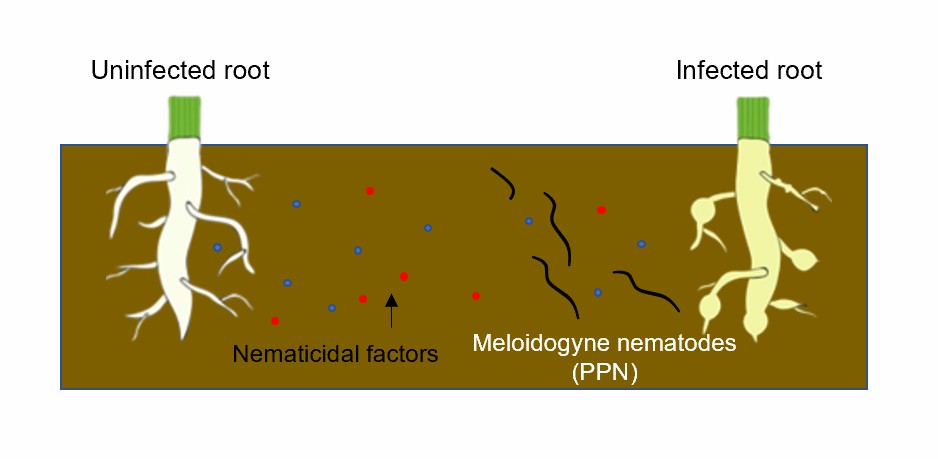The host cell wall is the main obstacle to the invasion and feeding of pine wood nematode. During nematode invasion, host lignin and other secondary cell wall-related substances synthetase genes are up-regulated, which induces host cell wall thickening and restricts the invasion of nematode. Thus, to successfully invade, nematodes secrete cell wall degrading enzymes that destroy plant cell walls and overcome host physical barriers. Cell wall degradation enzymes secreted by nematodes mainly include cellulase, glycosyl hydrolase, pectate lyases, expansin, α-L-glycosidase, etc.
Lifeasible offers comprehensive services covering a wide range of cutting-edge technologies to advance your projects. Our scientists have developed a series of innovative solutions to help analyze the mechanisms by which nematodes overcome physical host barriers.
 Fig.1 Barrier to parasitic nematodes.
Fig.1 Barrier to parasitic nematodes.
Lifeasible has extensive experience and expertise in plant science. We are committed to providing you with timely and high-quality deliverables. At the same time, we guarantee the cost-effectiveness, completeness, and simplicity of the report. If you are interested in our services or have any questions, please feel free to contact us or make an online inquiry.
Lifeasible has established a one-stop service platform for plants. In addition to obtaining customized solutions for plant genetic engineering, customers can also conduct follow-up analysis and research on plants through our analysis platform. The analytical services we provide include but are not limited to the following:
Get Latest Lifeasible News and Updates Directly to Your Inbox
Adaptive Evolutionary Mechanism of Plants
February 28, 2025
Unraveling Cotton Development: Insights from Multi-Omics Studies
February 27, 2025